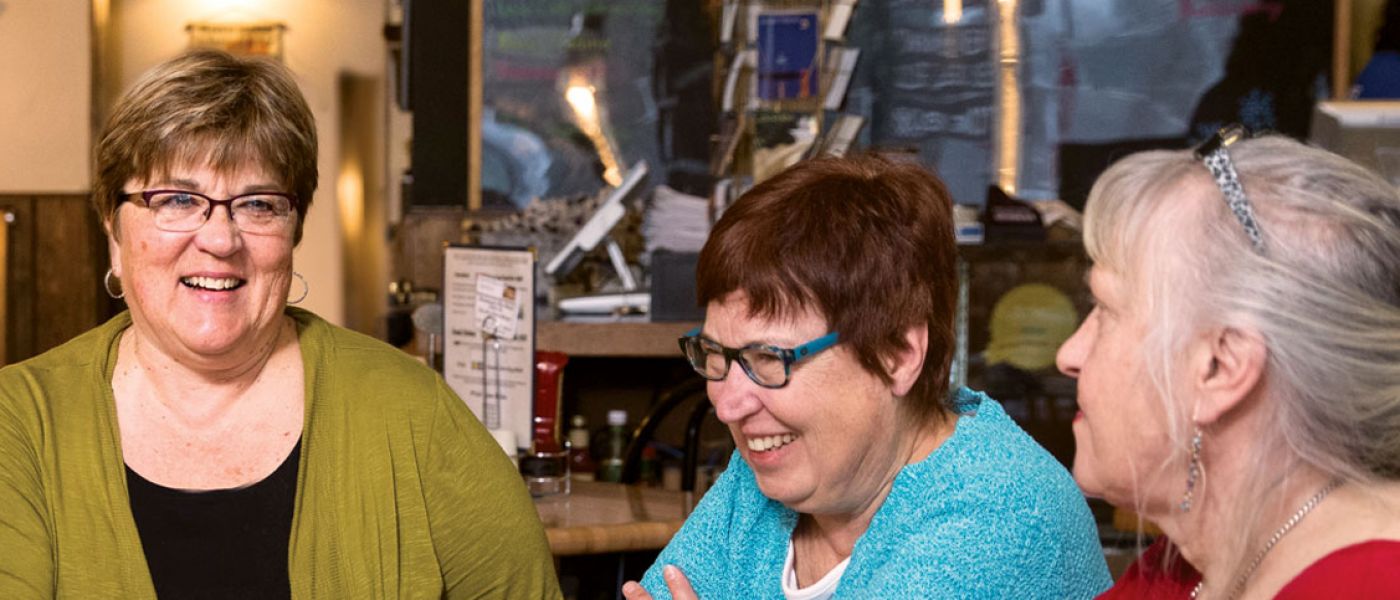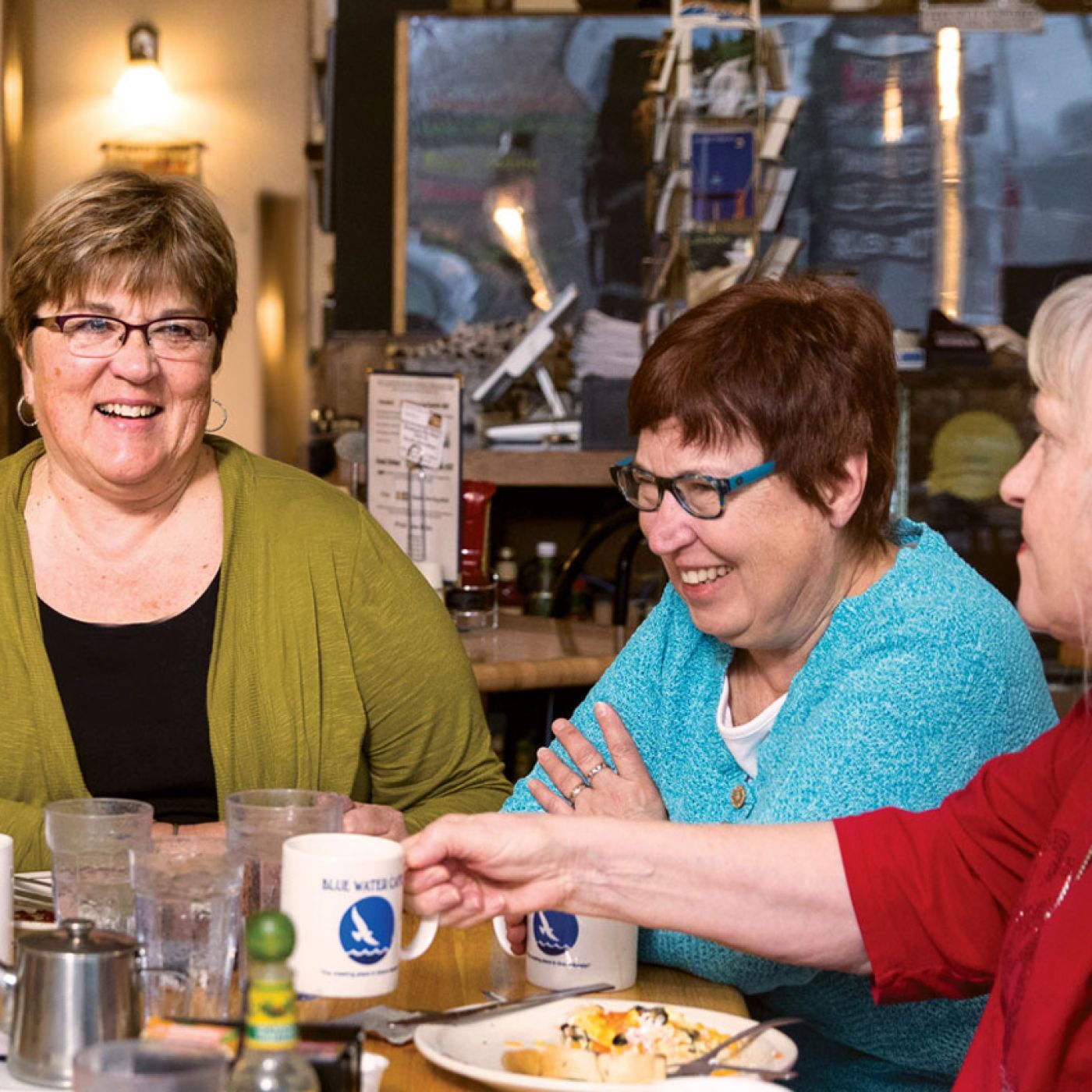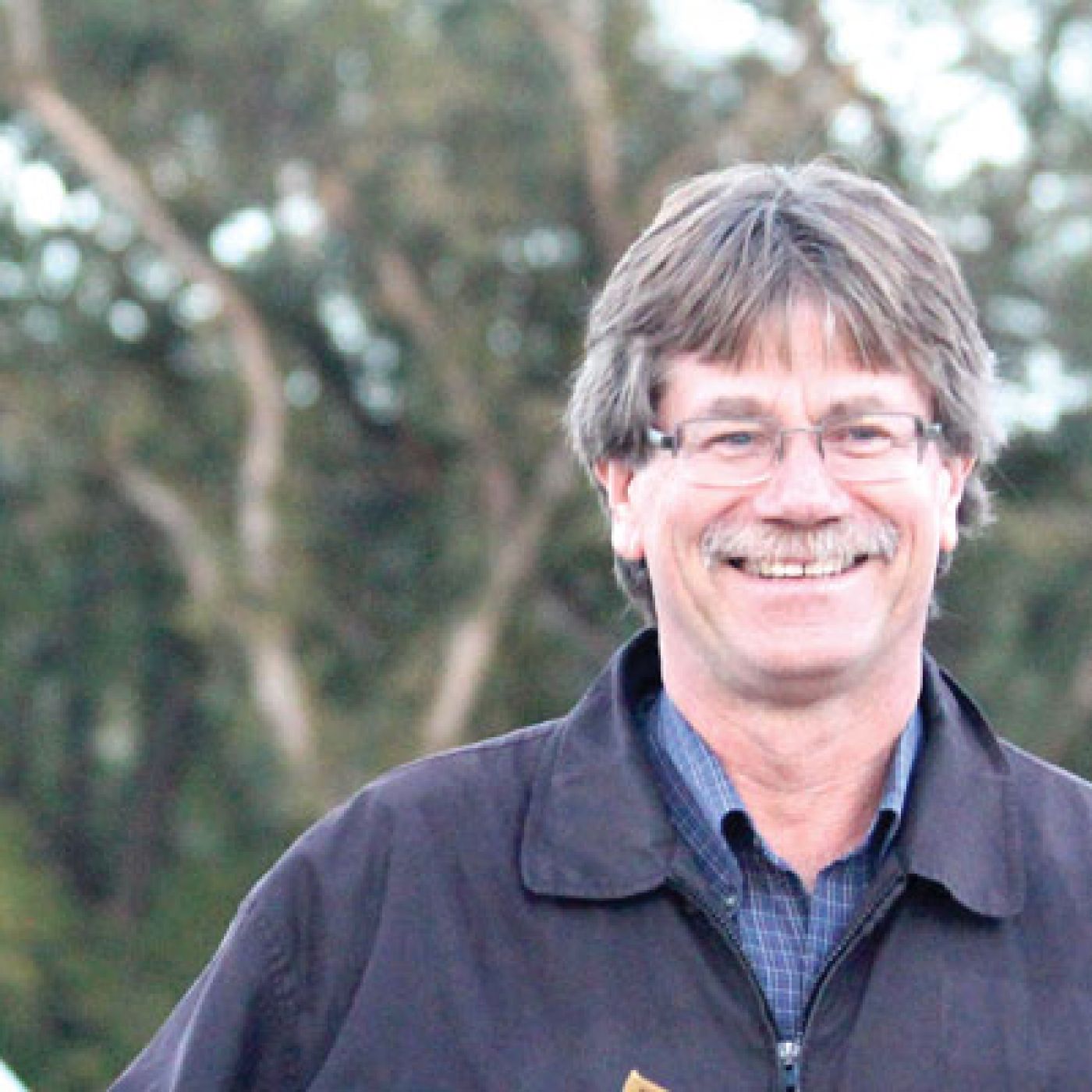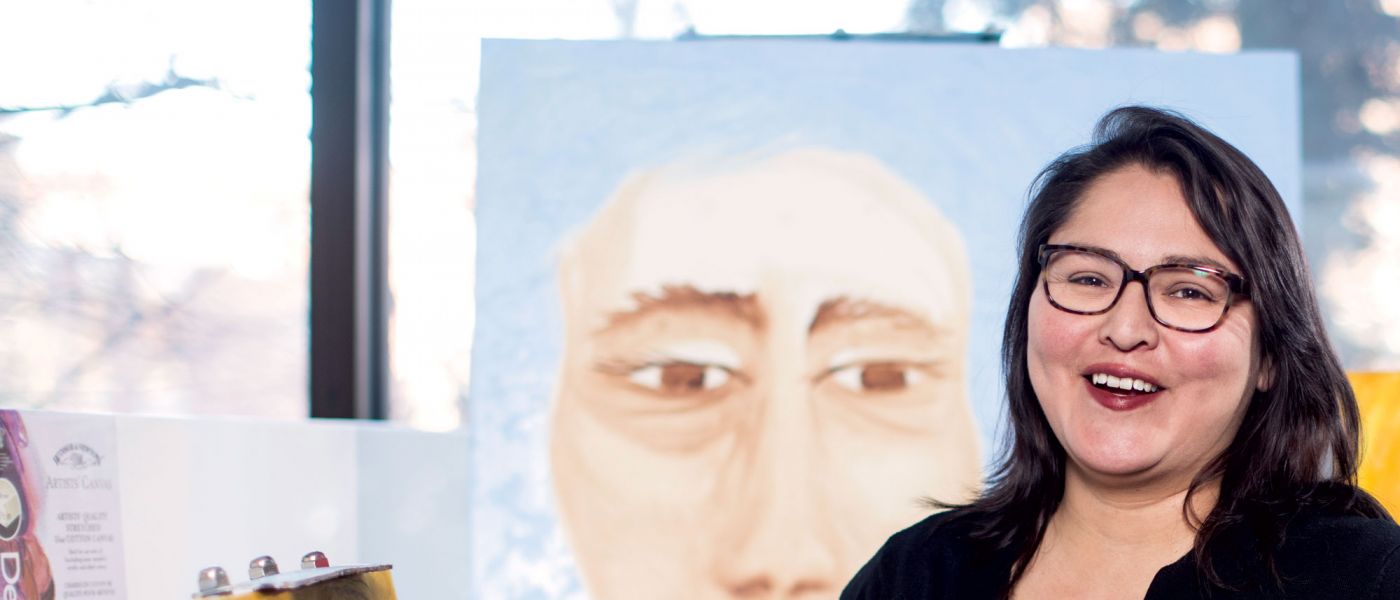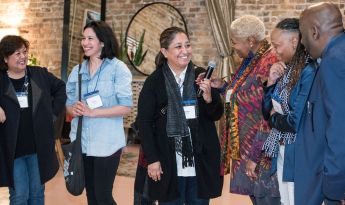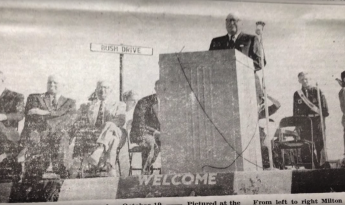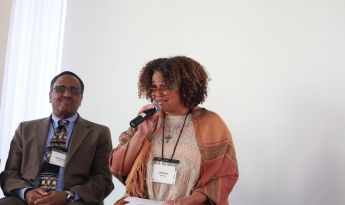With a bowl of oatmeal in front of her, Sue Hakes (BF'14) settled in at a table in a downtown Grand Marais, Minn., cafe. That Friday morning, two friends joined her in what would soon become a standing weekly date. The trio dubbed themselves the Friday Breakfast Club, and for the next four years a rotating cast of women joined them at the table to encourage each other to step out of their comfort zones and into the public light.
Hosting informal breakfast meetings to discuss local issues seemed like a great place for Hakes to begin her mission: Increase the number of women involved in civic leadership roles. Not once, but twice, Hakes unseated an incumbent in a bid for local office, first as the mayor of Grand Marais, and then as a Cook County commissioner two years later.
“When you talk about keeping leadership positions filled, sometimes people just need to be asked or encouraged to take a risk,” says Hakes, a 2014 Bush Fellow who started the breakfast meetings while working as a Cook County commissioner. “People need to know they’re not alone to find the courage to make an intervention into a system that needs changing.”
Rural areas in Minnesota could use the help, too. During the November 2016 election, more than 35 communities across the state did not have a mayoral candidate listed on the ballot. In fact, slots for more than 250 city and township positions went empty statewide. While the numbers forecast a bleak outlook for rural towns, many throughout greater Minnesota see something different.
“When you hear about positions going empty or low voter turnout, what we see is a space for people to rise together,” says Anita Patel, the leadership programs director at the Bush Foundation. “In order for our communities to thrive, we need people who feel confident in their voice, who feel connected to the possibility that exists within their community and who feel like they have the skills to act on their ideas.”
To reverse this leadership drought, the region needs to actively develop the next crop of rural citizens. The question now becomes: How do you unleash the untapped potential in rural communities?
A New Look For Rural Leaders
For 20 years, Dave Smiglewski (BF’16) was the youngest city council member in Granite Falls, Minn. In 1979, the 26-year-old began his tenure, but it wasn’t until he turned 46 that a member three years his junior finally joined. By that time, Smiglewski had already become the town’s mayor, and felt relieved to find another person his age willing to serve on the council.
“If we don’t teach people there’s a certain amount of joy and fun doing this, then we’ll continue to see a drop off in people’s involvement in their community,” says Smiglewski, who grew up in Granite Falls and moved back after college. “We can’t afford that.”
He doesn’t believe fewer people are interested in participating in their communities, but that more factors hold them back from doing so. Smiglewski wants to develop sustainable models of leadership that are more inclusive, less daunting and encourage new faces to discover the joys of public office. That’s why the mayor of more than 15 years applied for, and won, a Bush Fellowship in 2016.
Rural Leadership By the Numbers
For rural communities, the demand for leaders is nearly three times greater than in urban centers, says Ben Winchester, a senior research fellow at the University of Minnesota Extension Center for Community Vitality. Small towns need to enlist nearly one in 16 people to fill public or nonprofit roles, while areas like the Twin Cities only need about 1 in 51 people.
Winchester, who plans to publish an overview of his research in the spring of 2017, says these numbers are a conservative estimate, though. He based them on the minimum number of people the IRS requires a board of directors to appoint — three. On average, most nonprofits select 13 people to serve. Despite that opportunity, the Blandin Foundation saw a 12 percent decline over the last three years among rural Minnesotans opting into positions with city government, youth sports or local nonprofits.
For many, a lack of engagement comes down to time and money. More often than not people under 40 focus on developing their careers or starting a family. Add in the stress of a new socioeconomic climate, increasingly high student loan debt and two working parents, and there’s little free time left at the end of the day. The tense political climate doesn’t help, either.
“We’ve devalued community involvement or civic service. Our campaigns, particularly our national ones, have become so distasteful that it poisons people from the idea of being involved,” Smiglewski says. “They just want to turn it off and forget about it. It hardens people to the idea, and they become cynical.”
As cultural norms shift, models of engagement need to evolve, too. While millennials and younger generations aren’t more opposed to participating in their communities than past generations, their values and expectations around how they want to engage with the world are new.
“Many of the systems we have when it comes to serving in public office or similar roles are highly structured and not necessarily flexible,” says Michelle Kiley, the community development specialist at the Initiative Foundation. “Communities are living organisms that are forever in flux. We need to continually hit refresh and say, ‘What does our community look like today, and what are the needs?’”
For the first time, many small towns are also experiencing a visible demographic change in the residents who call them home. Take the community of Long Prairie, Minn. — for the past six years the kids in the incoming kindergarten classes have predominantly spoken Spanish at home.
Or St. Cloud, Minn., where the East African population is flourishing. That’s a radical shift in racial diversity that demands new systems of engagement.
“To sustain thriving economies and communities, this has to become a very inclusive and welcoming region,” says Don Hickman, the vice president for community and workforce development at the Initiative Foundation. “Everyone has gifts, passions, experiences and a network. We’re helping people see they have what it takes to be this generation’s next leader.”
Commitments to Leadership
In 2015, the Bush Foundation awarded the Initiative Foundation a grant to launch its Emerging Leaders program. Each of the 38 participants committed to one of three options: Run for public office, start a business or serve on a local nonprofit board. For Hickman and Kiley, the nearly yearlong project allowed them to respond to the demographic renewal in their area by taking a closer look at what people of color and leaders under 35 need — networks of peer support, intergenerational learning and increased opportunities for mentorship. By the end of the program, the cohort invested nearly 1,000 hours of service across several communities.
The importance of building relationships to cultivate small town leaders often isolated by geography isn’t lost on Kathy Annette, a lifelong resident of rural Minnesota and president of the Blandin Foundation. Since 1985, Blandin has hosted weeklong retreats that equip leaders with the tools they need to make change in their community.
The Blandin Community Leadership Program (BCLP) brings 26 residents together to live and learn for seven days. For Annette, who also serves on the Bush Foundation Board of Trustees, the real payoff is building relationships between participants who then support each other long after the week concludes. Since its inception, BCLP has worked across 600 communities, 11 reservations and with 7,000 individuals.
“The community tends to turn to the same people again and again,” says Annette, who is an alumnus of the first Blandin Reservation Community Leadership Program (BRCLP) cohort in 2001. “What we have to do is spread that leadership around more.”
Oftentimes, bringing new leaders into the fold is as easy as asking them. According to the Blandin Foundation’s Rural Pulse survey, one in four people say they’ve never been invited to serve in a leadership role. Yet for many, it’s the key to getting involved. The Blandin Foundation puts that missing practice into action when it recruits for its programs. In each community, the foundation partners with local organizations and businesses to find leaders flying under the radar. It also relies on alumni, elders and other community members to nominate those they think should participate. That recognition allows people who never considered themselves leaders to see their own potential.
Tackling Rural Isolation
Once word got out that Nevada Littlewolf (BF'16) was considering a run for city council in Virginia, Minn., her phone didn’t stop ringing. That was 2007 and she was 31 years old. Littlewolf grew up in town hanging around the women who staffed Paul Wellstone’s office where her sister interned. When she mentioned her interest in public office, those same women organized a phone chain and wouldn’t let her off the hook. Each called to encourage her to put her name on the ballot, but also to talk through the worries and concerns she had about holding a public office.
“Knowing there were people who wanted me there and who committed to support me made a difference,” says Littlewolf, who was awarded a Bush Fellowship in 2016. “I kept looking for a candidate to file who would represent me, and no one did. On the last day you could file, I decided I had to be the person to represent my community.”
When residents elected her 10 years ago, Littlewolf not only became the council’s youngest member, but its first female and Anishinaabe member, too. Littlewolf credits part of her success to The White House Project and its debate boot camp — an experience that not only improved her public speaking, but also plugged her into a space where women excited about civic engagement gathered together. She took a job working for the organization and began running the same boot camp she first attended. When the White House Project left Minnesota in 2012, she founded her own nonprofit to continue the work she started.
"This is changing the way women look at themselves as leaders."
Nevada Littlewolf (BF'16)
Littlewolf sees an opportunity in rural communities to build stronger networks of support that will prepare new leaders to step up as older members transition out of public roles. Her nonprofit, Rural American Indigenous Leadership (RAIL), focuses on developing leadership models that help rural and indigenous women — who are historically underrepresented in government — to tap into their potential.
A month after the 2016 presidential election, RAIL held a Friday night meeting to give local women a chance to decompress after the results of the race and to decide how they could move forward. By the end of the evening, three women committed to apply for the Human Rights Commission in Virginia, positions that had gone unfilled for two years.
“This is changing the way women look at themselves as leaders,” says Littlewolf. “Like a rail system, we are transporting women to where they need to go. We can bring as many as we need to, and they don’t need to get on or off at the same stop. This is a much different concept than the traditional ‘leadership pipeline’ that shoots people in at one end and spits them out somewhere else.”
Deep Investment in Individuals
For Sue Hakes, relationships like these prepared her for local government, and then helped her battle feelings of isolation when she got there. After the former Cook County commissioner first decided to run for mayoral office in 2008, she took a boot camp class with Littlewolf. That support helped her win. Now, she pays it forward. Through the Friday Breakfast Club, she has emboldened two women to run for, and win, seats as county commissioner and county board chair in Cook County. Her group even lobbied and passed a school referendum to give more than 150 students free or reduced-price lunch. In the face of declining civic participation, it’s people like Hakes that the Bush Foundation counts on to reverse the trend.
“Deep investment in an individual stretches that person’s belief in what’s possible both for them and their communities. These investments help individuals spark new ideas and weave global models to solve local issues,” says Anita Patel, who coaches Bush Fellows. “Rural communities have a vibrancy that comes from connectedness. When one person provides the spark, they can often inspire others in unexpected ways.”
